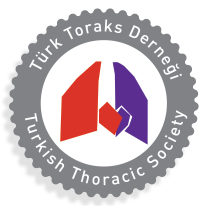Abstract
OBJECTIVE:
The purpose of this study was to determine the prevalence of nonalcoholic fatty liver disease in a group of chronic obstructive pulmonary disease patients. MATERIAL AND
METHODS:
This study comprised 48 stable chronic obstructive pulmonary disease patients who were diagnosed and categorized using the Global Initiative for Chronic Obstructive Lung Disease 2017 criteria. The prevalence of nonalcoholic fatty liver disease in chronic obstructive pulmonary disease patients was determined using noninvasive biomarkers and imaging methods. Steatosis was detected using magnetic resonance mDIXON-Quant sequence imaging, while fibrosis was detected using the acoustic radiation force impulse and FIB-4 index.
RESULTS:
A total of 58.3% of the patients investigated had a fat level of 5%, and nearly a quarter of them had a fat content of 10% or more, and 45.8% of the patients studied had severe hepatic fibrosis. The Fibrosis-4 (FIB-4) index revealed advanced fibrosis in 18.75% of them. No statistically significant association was found between chronic obstructive pulmonary disease groups of studied patients and the presence of steatosis and fibrosis (≥F2) using acoustic radiation force impulse. The presence of fibrosis, however, was statistically significant linked with chronic obstructive pulmonary disease groups of examined patients using the FIB-4 index. γ-Glutamyl transferase and alkaline phosphatase levels were greater in Global Initiative for Chronic Obstructive Lung Disease 3/4 and C/D groups.
CONCLUSION:
Nonalcoholic fatty liver disease is a common comorbidity in chronic obstructive pulmonary disease and should be included in the list of chronic obstructive pulmonary disease comorbidities.
Cite this article as:
Wagih Shaltout S, Abd El-Maksoud M, Abdel Rahman A, Yousef AM, El Sherbiny W. Clinical spectrum of nonalcoholic fatty liver disease in patients with chronic obstructive pulmonary disease. Turk Thorac J. 2022;23(6):420-425.



